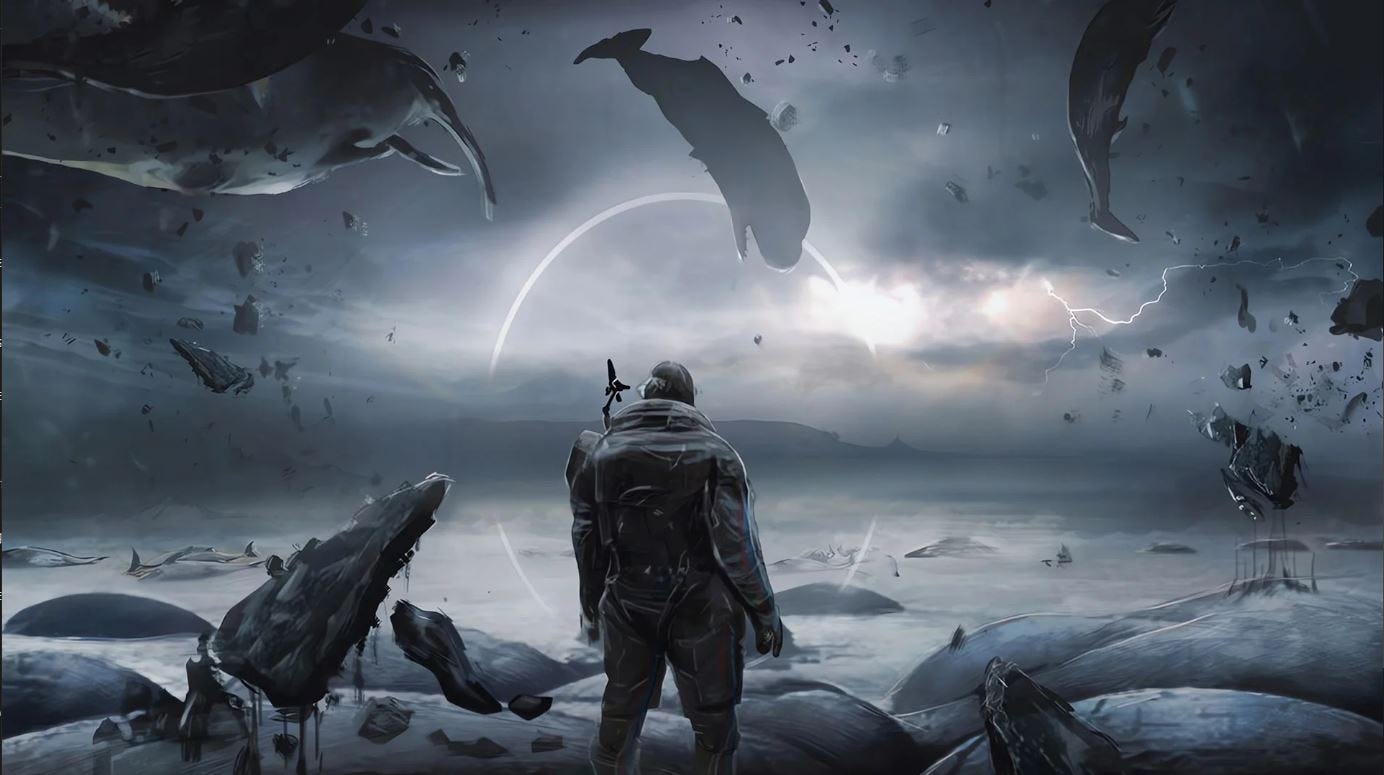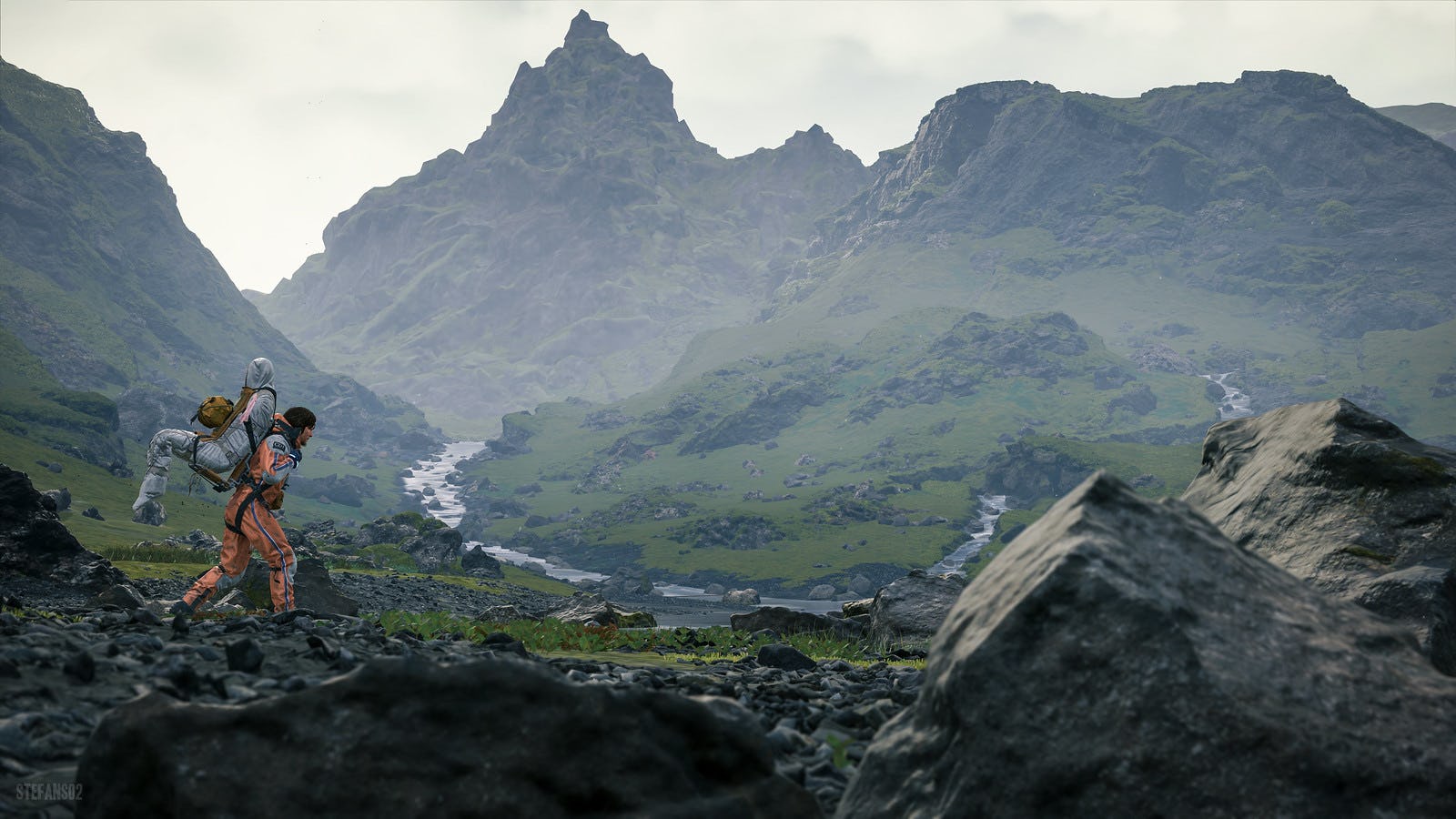
We hear a lot about polarization. Increasingly, our culture and discourse seem hellbent on making binary choices out of everything from picking sides in console wars to acknowledging climate change. Scroll through YouTube and you’ll notice almost every thumbnailed face is showing either agony or ecstasy. Things are either great or terrible, and anyone looking for the middle is often exhausted by the push and pull of the extremes. Ironically, we got a game five years ago that was all about the importance of connection and common ground, only for it to be one of the most divisive games of its era.
Death Stranding was released on November 18, 2019 by gaming auteur and Metal Gear creator Hideo Kojima. It launched with an unbelievable hype train behind it. A star-studded cast showed off groundbreaking visuals for Kojima’s first independent release. Free from the confines of his decades-long relationship with Japanese publisher Konami, the fabled game director and designer served up a visionary dystopia where a delivery man must navigate a North American continent that has been besieged by strange interdimensional creatures and rain that makes things old. It only gets weirder from there.

Players step into the role of Sam Porter Bridges, played by the inimitable Norman Reedus, as he schleps across this desolate, fragmented America in the wake of the titular “Death Stranding,” a cataclysmic event that blurred the lines between the world of the living and the dead. Ghostly entities known as BTs (Beached Things) lurk across the landscape threatening humanity. Sam is unique, he can see BTS and has a connection to a liminal space called “The Beach,” which exists as a sort of purgatory between the world of the living and the dead.
The TL;DR version is that BTs are monsters and Sam is one of the only people who can fight them, which makes him the target of several different factions competing for power in this new world. Despite his supernatural gifts, Sam’s main concern is figuratively and literally pedestrian: walking around delivering stuff to survivors. The survivors are isolated in cities. Sam’s mission is to reconnect them by establishing the Chiral Network, a communication system designed to restore a sense of unity and survival across the land. It’s also a great vehicle for delivering us some sweet celebrity cameos like Conan O’Brien and Geoff Keighley.

The gameplay centers on Sam’s journey as he delivers essential supplies across dangerous, varied terrain. Equipped with a variety of tools, like ladders, ropes, and power suits, Sam must carefully manage his payload to avoid losing cargo or injuring himself on treacherous paths. This decision proved to be the most divisive one for players.
The game places a unique emphasis on balance and physics, requiring players to strategize every step. You are literally controlling Sam’s balance as he walks and climbs with the L and R triggers. A lot of players saw the wide open spaces and thought they’d be Skyrim-ing it up by sprinting and smashing a jump button. Death Stranding’s carefully considered ambulation mechanic took something we never even think about in games (walking around) and turned it into something that requires our attention. Haters labeled it a “walking simulator” but a lot of fans found it to be integral to how much they enjoyed exploring the world. If nothing else, Death Stranding is a game that requires your attention.
In true Kojima fashion, there’s a fourth-wall-breaking element to the game’s themes of connection and community. An asynchronous multiplayer system lets players share structures, resources, and paths, creating a world where every action leaves a trace that can assist others on the same journey.
This becomes more rewarding the longer you play. It takes a lot of effort to build a road or a powered zipline, and getting “likes” from other players who got your shortcuts dropped into their game is a nice dopamine boost. It’s helpful early in the game, too, when you’re just a bare-bones deliveryman struggling to get from A to B.

Perhaps the biggest piece of Death Stranding’s legacy is its eerily prophetic timing. At launch, it was easy to have a cynical, eye-rolling take on Sam’s chosen profession. A delivery guy? The man who brought us Solid Snake, arguably the coolest soldier in the history of gaming, was putting us in the shoes of a glorified Amazon driver? We’re supposed to think these guys are important?
Then 2020 happened and, in fact, delivery drivers were the most important people in the world. Suddenly, Kojima’s dystopian fantasy felt a lot more real. It cast the game in a completely different context that practically begs you to play it again (or give it a second chance).
Through its intricate gameplay, mysterious story, and philosophical themes, Death Stranding explored concepts of human connection, isolation, and the endurance needed to bridge societal divides. The game’s story is deeply symbolic, drawing players into a layered experience that’s both visually striking and emotionally resonant. The vibe is chaotic, with plenty of the esoteric Kojima flavor some see as high art, and others as silly rubbish. Five years later, there’s still nothing out there quite like it. At least until Death Stranding 2 drops in 2025. Hopefully without the contagion this time.







